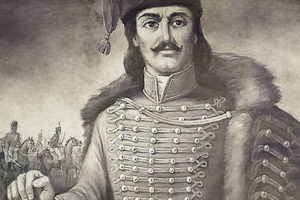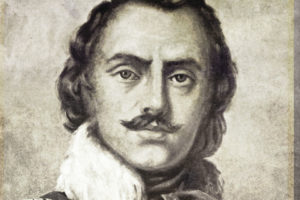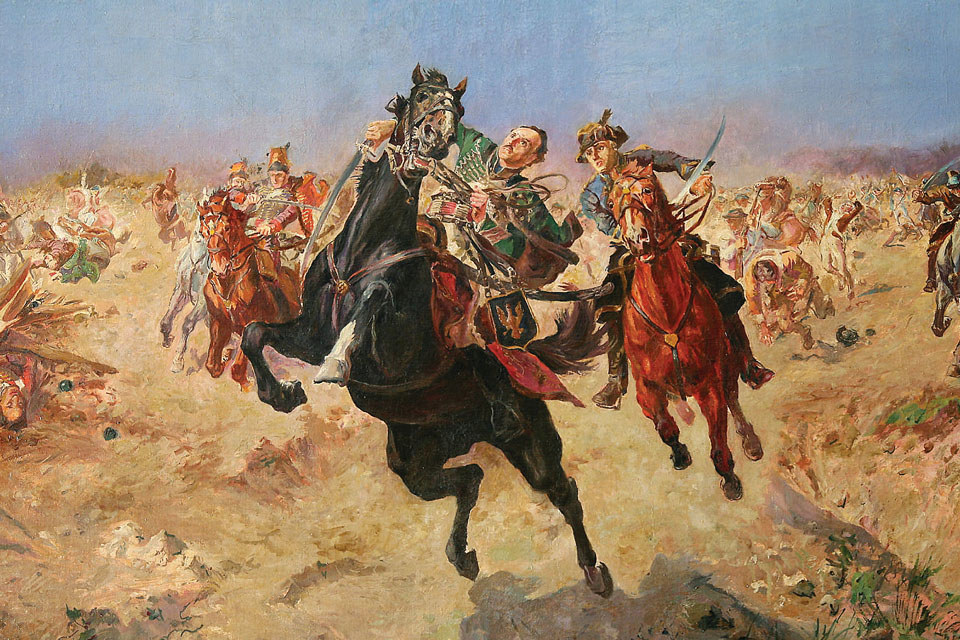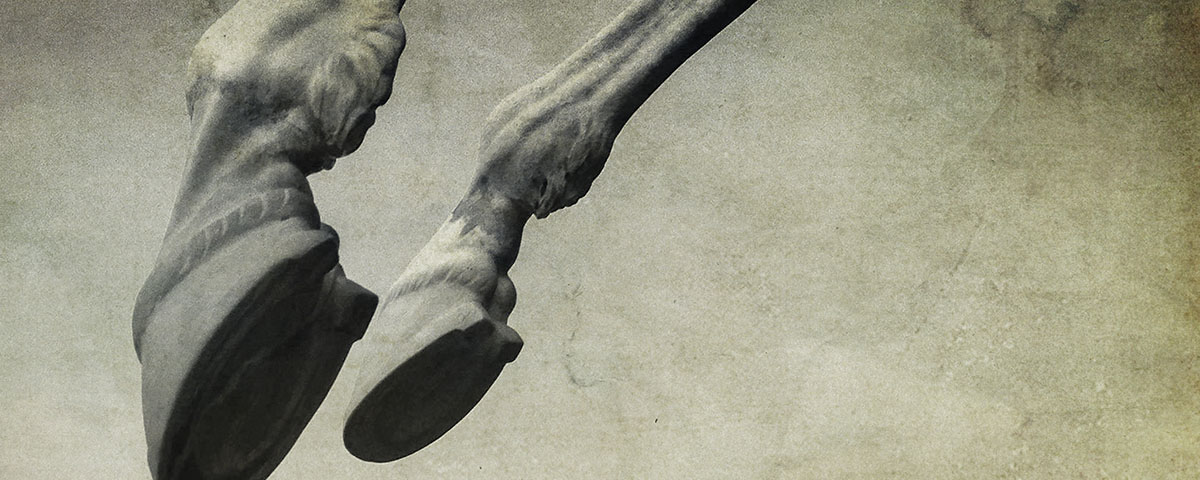As the principal attention in Poland had been for some time past paid to the cavalry,” George Washington dryly noted in a letter to the Continental Congress on August 18, 1777, “it is to be presumed this gentleman is not unacquainted with it.” The gentleman in question was and at that moment a man who was “not unacquainted” with cavalry was certainly welcome at Washington’s headquarters. The Continental Army’s mounted arm had yet to distinguish itself in the Revolutionary War, and Washington believed that a man “of real capacity, experience and knowledge in that service might be extremely useful.”
In the 13 months since the United States had declared its independence from Great Britain, the Continental Congress had been unable to develop an effective mounted force or find men who could organize, lead, and train one. This was partly because cavalries were costly but also because it was thought that the country didn’t have enough wide-open spaces to make mounted forces worth the expense. But in December 1776, after his army suffered a series of defeats and retreats, Washington told the Continental Congress that he wanted a robust and properly led cavalry. “I am convinced there is no carrying on the War without them,” he wrote to John Hancock, “and I would therefore recommend the Establishment of one or more Corps…in Addition to those already raised in Virginia.”
Six months earlier, Washington had recommended accepting the services of Captain John Leary’s Light Horse Troop of New York City, an independent militia, and shortly after attempted to incorporate the 400–500 members of Lieutenant Colonel Thomas Seymour’s Connecticut Light Horse into the Continental Army. But he soon had to expel Seymour’s command when its officers resisted performing what they perceived to be menial, nonmilitary tasks. In November, Major Elisha Sheldon’s small band of Connecticut cavalry joined Washington’s force and provided decent service until their enlistments expired in December. By then a troop from Philadelphia had reached the army as had a battalion of Virginia cavalry, which included a young officer who would go on to win renown as “Light Horse Harry” Lee.
Still, Washington remained dissatisfied with his cavalry. In December and January he notified Congress that he had authorized the creation of four regiments of mounted troops, and Congress established a formal table of organization for them in March 1777. Thus, it must have seemed a gift from Providence when the 30-year-old Pułaski appeared at Washington’s headquarters a few months later and described the impressive range of experience and knowledge he would bring to the fledgling American army.
Pułaski was born in the small village of Winiary, Poland, the second son of Count Józef Pułaski, and enjoyed a childhood of privilege in elite Polish society. During his teenage years,

Poland was compelled to accept a ruler imposed by Russia and endure efforts to place the Russian Orthodox Church on an equal footing with the Catholic Church. Józef, a pious Catholic, was outraged and organized a campaign of resistance. In February 1768 the Pułaskis gathered with other like-minded Poles at the fortress of Bar in Podolia and proclaimed the creation of a confederation to carry out an insurrection. The Knights of the Holy Cross, the military arm of the Confederation of the Bar, was soon established, with Józef as the grandmaster and Casimir, then just 15 years old, one of his key deputies.
That the Knights of the Holy Cross would be chiefly a cavalry force was a given. Few peoples on the continent of Europe made the mounted arm as central to their way of war as did the Poles. With their homes situated primarily on open plains and hostile neighbors who coveted their land—Germany, Russia, Austria, and Sweden—the Poles valued the mobility and speed that mounted forces offered. Cavalry’s pride of place in Polish identity and the high regard military men in Europe had for Polish cavalry were perhaps most famously secured in 1683 when, under the personal direction of King John III Sobieski, Polish horsemen rode to the rescue of Vienna.
As a cavalry commander, Casimir Pułaski went on to win widespread acclaim, bolstered in 1771 by his success fending off a 3,000-man Russian force besieging the hallowed monastery of Częstochowa. His successful defense of this holy shrine was Poland’s first significant victory over the Russians in a century. But as Pułaski’s reputation grew, so did the Russian-backed government’s retaliation against his family. By 1772 the Pułaskis’ substantial properties had been confiscated. (Józef Pułaski had been arrested by the Turks in December 1769 after crossing the Dniestr River and had died the following year in a Turkish prison.) In addition, the vigor of the Polish resistance reinforced Russia’s determination to control the country, which contributed to the first partition of Poland in April 1772. A month later, the hero of Częstochowa reluctantly concluded that he had to leave his beloved homeland.
Within a few years, Pułaski found himself in France and so deeply in debt—largely from financing military operations out of his own pocket—that French authorities arrested and imprisoned him. While friends and admirers were able to secure his release, Pułaski became an acute embarrassment to the French and remained an unwelcome presence there. In October 1776 he wrote to Silas Deane, an American commissioner in Paris, letting him know of the “zeal which I have to contribute in my particular way to the success of the cause of English America.” Deane, who during his time in France found himself “well-nigh harassed to death” by European soldiers looking for employment, did not respond to Pułaski’s letter.
Pułaski was able, however, to secure a meeting with Benjamin Franklin, the U.S. ambassador to France, who saw enough that he liked about Pułaski to pay for his trip to America (but not enough to agree to cover his debts). Franklin also wrote to Washington lauding Pułaski as “an officer famous throughout Europe for his bravery and conduct in defense of the liberties of his country against the three great invading powers of Russia, Austria, and Prussia” and suggesting that he might “be highly useful to our service.”
For Pułaski, that was good enough. On June 13, 1777, he boarded a ship for America.
Four months earlier, Michael Kováts de Fabricy had also secured passage on a ship to America from France with an eye to offering his services to the Continental Army. “I am a free man and a Hungarian,” Kováts had declared in a January 1777 letter to Benjamin Franklin. “I was trained in the Royal Prussian Army and raised from the lowest rank to the dignity of a Captain of the Hussars.”

Kováts had an even more impressive military record than Pułaski. Born in Karcag, Hungary, in 1724, Kováts belonged to a noble family whose history of service to the Hungarian crown went back centuries. In Hungary as in Poland, cavalry was the most important element of the army, and for the same reasons: the country’s open plains and acquisitive neighbors—in Hungary’s case, Habsburg Austria and the Ottoman Turks. When Kováts decided to follow in his family’s path of military service, it was inevitable that he would do so as one of its famed hussars.
During the War of the Austrian Succession, King Frederick II of Prussia, impressed by the quality of Queen Maria Theresa’s cavalry, made a concerted effort to recruit Hungarian hussars for his army. Kováts was among those who decided to accept Frederick’s terms, and so it was in Prussian uniform that Kováts first saw active service during the 1740s. In the following decade of war between the Hohenzollerns and Habsburgs, Kováts forged a reputation as a brave and effective officer, proudly rising in rank, he declared, “not so much by luck and the mercy of chance than by the most diligent self-discipline and the virtue of my arms.”
Though he’d received the Ordre Pour le Mérite, the highest decoration in Frederick the Great’s army, by 1761 Kováts had had enough of the Prussian service and made his way to Poland. There he trained participants in Poland’s nascent patriot movement, which included members of the Pułaski family, before he returned to Hungary. On learning of Kováts’s return, Maria Theresa’s government incarcerated him before deciding that he could best serve Habsburg interests as a major in one of its hussar regiments.
Within a few years, however, an unhappy marriage, a desire to escape heavy debts, and disdain for Maria Theresa’s son Joseph, who had become Holy Roman Emperor in 1765, led Kováts to return to Poland. He resumed his work with the Polish patriot movement before making his way to France, where a local merchant who was sympathetic to the American cause secured his passage across the Atlantic.
But Franklin did not forward Kováts’s January 1777 letter to Congress for fear of offending potential allies in Europe, as it contained disparaging remarks about Holy Roman Emperor Joseph II, whose sister, Marie Antoinette, was the queen of France. And so Kováts, despite meeting with Washington in May, did not receive a commission. He instead found employment raising a unit from among eastern Pennsylvania’s large and influential German population and forged an especially strong relationship with the Moravian Order of Lutheran German Pietists in Bethlehem, Pennsylvania.
Pułaski was similarly stymied in his efforts to secure an appointment in the Continental Army. Despite a letter from Washington lauding Pułaski’s experience and declaring him to be a man who “has been like us, engaged in defending the liberty and independence of his country, and has sacrificed his fortune to his zeal for those objects,” the Continental Congress did not act quickly; when the British offensive against Philadelphia began, Pułaski was still without a formal appointment. Offering his services to Washington as an aide, he quickly proved his worth. At the Battle of Brandywine on September 11, 1777, when a flank attack by British General William Howe caught Washington off guard and threatened to rout the Continental Army, Pułaski asked permission to command the headquarters cavalry detachment. Washington granted it, and with what another officer later described as his “usual intrepidity and judgment” and “penetrating military coup d’oeil,” Pułaski led the unit in a counterattack that arrested the momentum of the British forces and helped Washington extricate himself and the army from the field.
As the Continental Army licked its wounds, Pułaski learned that, four days after Brandywine, Congress had decided to authorize his commission as brigadier general and appointment as commander of the Continental Army’s mounted forces.
His first significant action as head of the American cavalry came on September 16, when Washington halted the Continental Army’s withdrawal from Brandywine. Hungry, demoralized, and under a heavy rain, Washington’s army was in no condition for another battle with Howe’s redcoats. Pułaski decided to lead a reconnaissance and ran into a large number of British troops whose maneuvers suggested that Howe was preparing to strike again. After delivering a charge that compelled the British to halt their movements, Pułaski rushed back to Washington’s headquarters and suggested that, if reinforced with 300 foot soldiers, he would be able to hold off the enemy long enough for Washington to prepare the rest of the army for battle. Washington agreed, and Pułaski was able to delay the British Army and prevent what could have been a disastrous defeat for the American cause.
Pułaski’s appointment was by no means universally popular. The number of foreign officers receiving significant appointments in the Continental Army provoked American officers; they understandably resented the implied message that they should step aside and let foreigners show them how things should be done.
For those sensitive to such matters, the tone with which Pułaski assumed command of the Corps of Continental Light Dragoons—which, despite its grand name, consisted of a mere four regiments with a total of no more than 750 men—was not encouraging. To be sure, Pułaski was a skilled and experienced leader of mounted men, and given the well-documented shortcomings of the Continental Army of 1777, it wasn’t surprising that he saw considerable room for improvement. But his lack of fluency in English (he spoke Polish, Russian, German, and French) caused him to rely heavily on foreign aides and advisers, putting some distance between himself and those under his command. (Even Washington would later observe that Pułaski was “a stranger not well acquainted with the language, genius, and manners of this country.”)
Moreover, Pułaski’s ideas regarding the use of cavalry clashed with Washington’s. The American commander in chief understood that the fate of his army would ultimately rest on the effectiveness of his infantry, and he saw cavalry’s role as supporting it. Pułaski believed that cavalry, if properly led and employed, could be the decisive combat arm—a vision rooted in his experiences in Poland. To maximize the effectiveness of his force, he wanted to concentrate it and exploit its mobility through raids and other independent actions. Though Pułaski said he had no desire for cavalry’s “superiority over the rest of the army,” he nonetheless made his views known to Washington in a letter just a few months after assuming command. “The cavalry in an army generally forms a separate division, and has greater privileges than the infantry,” Pulaski declared, “but here I find it is the contrary.”
Pułaski, to his own disappointment, could not point to many accomplishments as the 1777 campaign season came to a close. When Washington and the rest of the army took up winter quarters at Valley Forge that December, Pułaski was ordered to take his forces to Trenton. He devoted himself to training and disciplining his men, declaring, “I flatter myself by the next campaign to render it essentially serviceable.”
Pułaski knew there was one man who could help him forge his command into an effective unit. “It is absolutely necessary that the Cavalry have a Master of Exercise,” Pułaski wrote Washington, “who should instruct the commissioned and non-commissioned officers….There is an officer now in this country, whose name is Kowacz [sic]. I know him to have served with reputation in the Prussian service, and assure Your Excellency that he is in every way equal to his undertaking.”
Pułaski’s efforts were frustrated, however. Other officers requested detachments from his command to support their operations, and Trenton lacked adequate housing and subsistence for his men. Then, in late February 1778, on receiving word that Howe was planning a large foraging expedition, Washington ordered Major General Anthony Wayne to take 500 men into New Jersey to seize cattle for the army before the British could get to them. When he learned that Howe had dispatched a far superior force to deal with Wayne, Washington ordered Pułaski to provide reinforcement: “You will afford General Wayne all the assistance in your power.”
Pułaski promptly complied. He helped Wayne compel the British to withdraw to Philadelphia, and Wayne praised Pułaski for his performance in an engagement at Haddonfield, New Jersey, on March 2. But Wayne, like Washington, was unwilling to recognize the cavalry as a separate, independent command whose commander was a peer, not a subordinate, and Pułaski submitted his resignation to Washington. While he appreciated Pułaski’s talents, Washington had become aware of his difficulties and reluctantly decided to accept his resignation.
Pułaski remained eager to contribute to the American cause, however, and managed to get Washington to endorse his proposal to raise an independent corps of light infantry and cavalry that he would command as a brigadier general. In March 1778 Pułaski began recruiting what would become known as the Pułaski Legion. And Washington, who said he had heard much “about of the character and abilities of Mr. Kováts,” also approved Pułaski’s request for the Hungarian to serve as the command’s master of exercise.
Kováts eagerly plunged into his duties during the second half of April 1778. In his new unit, he particularly emphasized the “free corps” concept popular in Europe in the 1740s and 1750s. To preserve the strength of their rigorously drilled and tightly disciplined battalions of infantry, Eastern European military leaders began accepting into their service units of light forces to operate around the fringes of their armies. Free corps tactics consisted of “petty warfare,” kleinkrieg, or what the 18th-century French military author Thomas August Le Roy de Grandmaison had labeled la petite guerre. This was the style of warfare adopted early on by Hungarian hussars, Russian Cossacks, and Croat light infantry. Traditional line unit commanders distrusted the free corps units because of their roughneck nature and lack of discipline. But the units used those traits, along with superior mobility, to their advantage, attacking supply convoys, setting ambushes, and harassing encampments while avoiding direct contact with the armies that fought the great battles of the era.
From his headquarters in Baltimore, Pułaski quickly raised the 68 cavalrymen and 200 infantrymen that Congress had authorized, organizing them into three companies of cavalry and three companies of infantry. In August, he and Kováts took the legion (and the banner that would be immortalized in Henry Wadsworth Longfellow’s 1825 poem “Hymn of the Moravian Nuns of Bethlehem at the Consecration of Pułaski’s Banner”) to Philadelphia and showed them off in a review before Congress.
However impressed Congress may have been with their work, Pułaski and Kováts had to wait several months to learn the fate of their command. Finally, in early October, Pułaski received orders to take his men to southern New Jersey, where he could undertake exactly the sort of independent operations he had conceived for his force. Specifically, he was to defend the region against Captain Patrick Ferguson’s forces, which were disrupting the activities of American privateers who had been harassing and seizing British ships along the coast.
The arrival of Pułaski’s command persuaded Ferguson to abandon a planned raid on a local ironworks, but the only significant action between the forces went poorly for the Americans. During the early morning of October 15, part of Ferguson’s command, with the assistance of a deserter, was able to surprise Pułaski’s Polish-born infantry commander, Lieutenant Colonel Baron de Botzen, while he and his men slept. When word of the attack reached Pułaski, he raced to the scene with his cavalry and forced the British to flee. But Botzen was dead, and 50 of his men had been killed or mortally wounded—many bayoneted as they slept. This episode, later known as the Little Egg Harbor Massacre, severely diminished the effectiveness of Pułaski’s command, and with the end of the campaign season approaching, he withdrew to Trenton.
Pułaski was then ordered to Minisink, on the Delaware River in northwest New Jersey, to protect the citizens from attacks by bands of loyalists and Mohawk Indians. Three months of inactivity there so demoralized him that he once again contemplated resigning, but in February 1779 Washington ordered him to the Carolinas to assist in the defense of Charleston against a British force commanded by Brigadier General Augustine Prévost.
By the time Pułaski and his cavalry arrived on May 8, many Charleston officials thought Prévost’s army unstoppable, and a number of them preferred immediate surrender to a pointless fight for the city. Though the long march and an outbreak of smallpox had taken a severe toll on his men, Pułaski vehemently disagreed. On May 10 he and Colonel John Laurens went to a city council meeting and argued passionately against surrender, successfully persuading Major General William Moultrie, the commander of the American forces in Charleston, to defend the city. The following day, with his infantry having just arrived, Pułaski led his forces toward the British lines in search of a fight.
Learning that Prévost’s advance guard of 900 men had crossed the Ashley River just north of Charleston and recognizing that he could not hope to win a standup fight with the British, Pułaski developed a plan to draw their lead elements into an ambush. He ordered the legion’s infantry to take up a position behind a breastwork northwest of the city at the Old Race Track, leaving Kováts to direct them, and then led the mounted force toward the British lines. After riding forward about a mile, Pułaski made contact with a British mounted force commanded by Captain Thomas Tawse. After a brief skirmish, Pułaski ordered his men to fall back and Tawse followed. But the legion’s infantry, many of whom were recent recruits overeager for action, decided to leave the breastwork to occupy higher ground in front of it, so that when the British charged, the infantry was forced to flee into nearby woods. During the brief battle, Kováts was killed, along with 40 members of the legion’s infantry. The British buried him on the field.

Though the fight of May 11 was a costly defeat for Pułaski’s command, it did arrest the British advance. When Prévost received word the following evening that an American force of 4,000 men, under Major General Benjamin Lincoln, was moving toward Charleston, he abandoned his raid and returned to Savannah, Georgia.
A few months later, after receiving a message from French admiral Count Charles-Hector Théodat d’Estaing that his fleet would be available for operations against Savannah, Lincoln decided to try to drive the British from the town. Riding in the vanguard of Lincoln’s force, Pułaski’s men fought a series of skirmishes with the British and reached Savannah the first week of October. There they found d’Estaing’s artillery in position, already firing on the city. By October 8, however, the British had given no sign that they would yield the city, so Lincoln and d’Estaing agreed to attempt an assault the next day on the Spring Hill redoubt that anchored the British right flank. Pułaski would command both the French and American cavalry and support the attack.
Thanks to a deserter who had informed the British, the attacking French and American infantry immediately ran into a storm of artillery and infantry fire. Riding forward, Pułaski learned that some of his men had been slowed by the swampy terrain. As he rode over to lead them on, he was struck in the right groin by grapeshot and fell from his horse. Unlike Kováts’s men, Pułaski’s were able to retrieve their fallen commander when the fighting ended, delivering him aboard the Wasp, a United States brig moored in Savannah Harbor, so that he could be taken to Charleston.
Pułaski’s wound proved fatal. On October 22, 11 days after his death, the city of Charleston honored Pułaski with a public funeral.
Pułaski and Kováts figure prominently among the foreign officers who served the American struggle for independence, and properly so. They brought badly needed experience and energy to the task of building the proficiency of the Continental Army’s mounted arm, which won them a place in American military history as “the fathers of the U.S. Cavalry.” In addition to the practical contributions they made to the American war effort, Pułaski’s and Kováts’s efforts had strategic importance as well. That two immigrants from countries also struggling against outside oppression served and gave their lives for the cause of American independence helped the patriots cast their efforts as part of a broader global struggle. Because of their contributions to the American army and the sacrifices they made on the battlefields of Charleston and Savannah, Pułaski and Kováts remain enduring sources of pride for Americans of Polish and Hungarian descent. MHQ
ETHAN S. RAFUSE is a professor of military history at the U.S. Army Command and General Staff College at Fort Leavenworth, Kansas, and the author of eight books on the Civil War.
[hr]
This article appears in the Autumn 2017 issue (Vol. 30, No. 1) of MHQ—The Quarterly Journal of Military History with the headline: The Two Horsemen of the Revolution
Want to have the lavishly illustrated, premium-quality print edition of MHQ delivered directly to you four times a year? Subscribe now at special savings!






